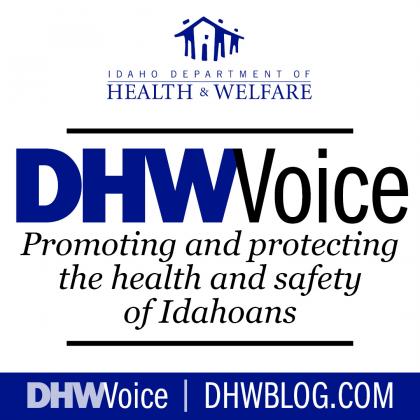From DHW Director Dave Jeppesen: Working with our partners to earn public trust
Making progress toward Strategic Goal 4: Strengthen the public's trust and confidence in the Department of Health and Welfare
Just over two years ago, Idaho had its first reported case of COVID-19. Now, as Idahoans reflect on two years of life during the pandemic, we have changed the ways we interact with each other in our communities. And through these changes – some good, some more challenging – the Department of Health and Welfare (DHW) continues working every day to help Idahoans live their best lives.
The work of DHW staff is transparent to the Idahoans we serve. This has not been by accident. As part of the department’s strategic plan, we have been hard at work on a strategic objective designed to help Idahoans understand the care, compassion, and expertise DHW employees demonstrate daily. Every day, we work to deliver services to Idahoans. Part of this work includes making sure Idahoans know which services are available, and earning their trust that the information we provide is accurate and timely.
This strategic initiative involves sharing information and developing relationships with everyone who has a stake in supporting and building strong Idaho communities. This includes the media, taxpayers, legislators, customers, healthcare providers, community organizations, the DHW board, the Governor’s office, DHW employees, and of course, the Idaho public.
Communications have been designed to reach Idahoans where they prefer to find their information, whether that is through videos, blogs, social media, the department website, or the media. These communications strategies have been designed to demonstrate that the department is fully transparent to those we serve and are accountable to.
This strategic objective includes seven tasks, including:
- The development of training materials that will help DHW employees communicate more effectively with our customers and audiences.
- The development of resources that will help the media find the information they need quickly and efficiently. This includes an online DHW Press Room (coming soon!), where media professionals can access resources they might need, such as:
- Contact information for the Office of Communications
- Links to DHW news releases, Facts, Figures, and Trends, our annual report, and other publications
- Background information and photos of our leadership team
- Photos key DHW buildings
- Links to recorded media briefings
- Links to COVID-19 dashboards and the coronavirus website
- The development of a strategy to engage community organizations connected to DHW programs or our mission, and to create consistency and support through our messaging.
- Transparency in our work through monthly “Living Strategic Plan” communications, such as this monthly blog series.
- A DHW newsletter strategy to more effectively to communicate DHW news, successes, and updates.
The department’s Office of Communications continues to work with DHW employees to build an internal culture that tells our story as a department: that we are here to help, and we are a source of information that can be trusted.
You can read more about the DHW Strategic Plan on our website.



Join the Discussion
Please note the following terms of participation in commenting on the DHW Voice blog.
To ensure a productive discussion you agree to post only comments directly related to this post and to refrain from posting obscenities; threatening, abusive or discriminatory language; sexually explicit material; and other material that would violate the law if published here; promotional content; or private information such as phone numbers or addresses. DHW reserves the right to screen and remove inappropriate comments.